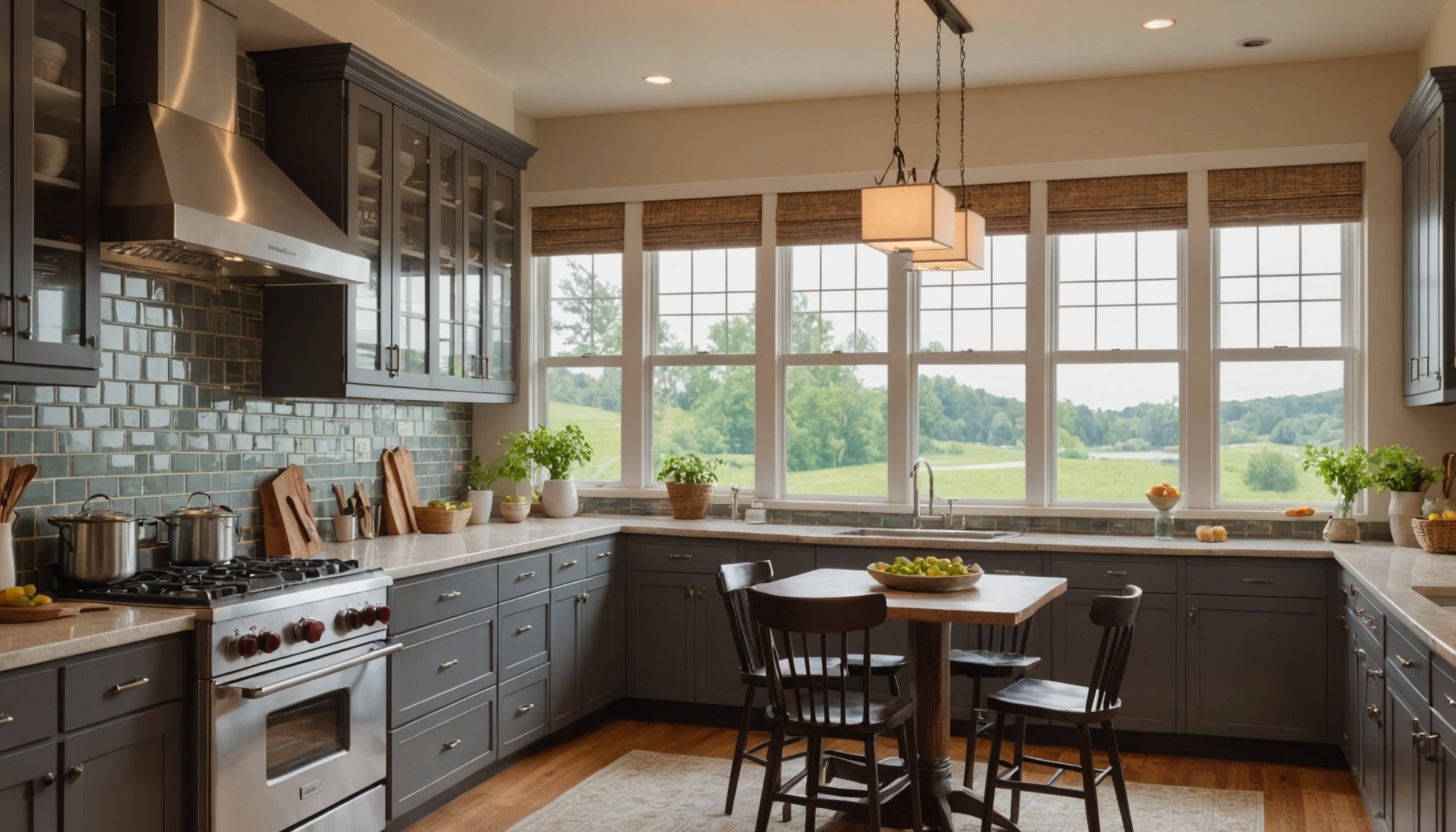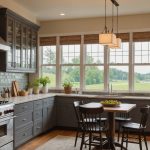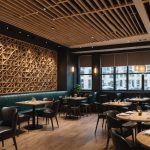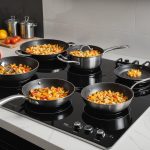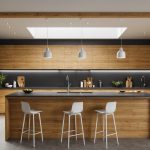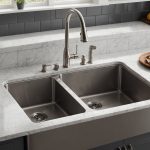The placement of your kitchen window can significantly influence your dining routine and habits. Natural light can elevate mood and enhance the overall dining experience. Conversely, poor window positioning may hinder enjoyable meals. This exploration reveals how the interaction between your kitchen layout and window location shapes not just your cooking, but the connections made over shared meals. Discover practical tips to optimize your culinary space and foster delightful dining moments.
Influence of Natural Light on Dining Experiences
Exploring how light transforms your dining space
Also read : Discover How a Portion Control Mat on Your Dining Table Can Help You Eat Mindfully and Reduce Overeating
Enhancing Dining Atmosphere
Natural light plays a pivotal role in creating an inviting dining ambiance. When kitchen windows are strategically placed, they allow sunlight to flood the room, enhancing colors and textures. This creates a warm and welcoming environment, perfect for enjoying meals. The interplay of light and shadow can accentuate the aesthetics of your dining space, making it more appealing.
Psychological Effects on Mood and Appetite
Exposure to natural light has been linked to mood enhancement and increased appetite. Sunlight stimulates the production of serotonin, a hormone associated with happiness and well-being. This can lead to more enjoyable dining experiences, as diners feel more relaxed and content. Moreover, natural light can help regulate circadian rhythms, encouraging a healthy appetite during mealtimes.
Additional reading : Enhancing Culinary Comfort: The Impact of Cooktop and Oven Alignment on Ergonomics and Healthy Eating Habits
Case Studies and Examples
Consider a dining space with well-placed kitchen windows:
- Morning sunlight gently illuminates the breakfast table, creating a cozy start to the day.
- During lunch, ample natural light brightens the room, enhancing the visual appeal of meals.
- Evening light casts a soothing glow, perfect for intimate dinners.
These examples illustrate how thoughtful window placement can significantly improve the dining ambiance, making each meal a delightful experience.
Aesthetic Considerations in Kitchen Window Design
Exploring styles that elevate your dining space
Popular Window Styles for Kitchens
When designing a kitchen, window aesthetics play a crucial role in defining the space's overall appeal. Popular styles include:
- Bay windows: Add depth and create a cozy nook.
- Casement windows: Offer a classic look with excellent ventilation.
- Picture windows: Provide unobstructed views and allow maximum light.
These styles enhance the visual appeal of the kitchen, making it both functional and inviting.
Color Schemes and Materials That Complement Dining Spaces
Choosing the right color schemes and materials is essential to harmonize with your dining area. Consider neutral tones like whites and grays, which can seamlessly blend with various design trends. Materials such as wood and metal can add texture and warmth, enhancing the room's aesthetics.
Integrating Window Design with Overall Kitchen Aesthetics
To achieve cohesive kitchen window aesthetics, integrate window design with other elements like cabinetry and countertops. This ensures a unified look that complements the dining space. An effective strategy is to match window frames with cabinet finishes, creating a seamless flow of visual appeal throughout the kitchen.
"The details are not the details. They make the design." – Charles Eames
This approach ensures that every meal is enjoyed in an environment that is both visually pleasing and functional.
Functional Aspects of Kitchen Window Placement
Optimizing your kitchen for efficiency and comfort
Importance of Window Placement for Ventilation
Strategic window placement is essential for enhancing kitchen functionality. Properly positioned windows improve ventilation by allowing fresh air to circulate, reducing cooking odors and excess moisture. This not only enhances air quality but also maintains a comfortable environment for meal preparation.
How Window Orientation Affects Meal Preparation
The orientation of kitchen windows significantly impacts both meal preparation and dining comfort. East-facing windows can provide morning light, which is ideal for breakfast preparation, while west-facing windows may offer warmth during dinner time. Thoughtful window orientation ensures optimal lighting conditions, reducing the need for artificial light and creating a pleasant cooking experience.
Practical Tips for Maximizing Functionality
To maximize kitchen functionality, consider these practical tips for window placement:
- Install windows opposite each other for cross-ventilation.
- Choose adjustable windows to control airflow.
- Align window height with counters for ease of use.
These strategies enhance both the ventilation and overall comfort of your kitchen, making it a more enjoyable space for cooking and dining. By focusing on window orientation and placement, you can create a kitchen environment that meets both aesthetic and functional needs.
Distractions and Challenges of Window Placement
Navigating the balance between views and focus
Identifying Common Distractions
Kitchen distractions can arise from poorly planned window placement. Large windows, while offering beautiful views, may inadvertently draw attention away from the dining experience. Glare from sunlight can also be a significant issue, disrupting both meal preparation and dining focus.
Balancing Natural Views with Dining Focus
Striking a balance between enjoying natural views and maintaining dining focus is essential. While picturesque landscapes can enhance the dining environment, they should not overpower conversations or the enjoyment of meals. Consider using window treatments like blinds or curtains to modulate the amount of light and view, ensuring that the dining focus remains intact.
Solutions for Mitigating Distractions
To address window-related challenges, consider these solutions:
- Install frosted or textured glass to diffuse light.
- Use adjustable blinds to control the intensity of sunlight.
- Arrange seating to minimize direct glare.
These strategies help preserve the benefits of natural light while mitigating kitchen distractions. By thoughtfully managing window placement, you can create a harmonious dining environment that supports both visual enjoyment and social interaction.
Expert Recommendations for Optimal Window Placement
Enhancing your kitchen with expert kitchen design tips
Insights from Interior Designers on Window Placements
Interior designers emphasize the importance of thoughtful window placement advice to enhance both aesthetic and functional aspects of a kitchen. According to experts, positioning windows to capture natural light without causing glare is crucial. This can be achieved by using window placement advice that considers the room's orientation and daily sunlight patterns.
Designers often recommend placing windows at varying heights to create dynamic lighting effects, enhancing the overall ambiance and supporting dining optimization.
Recommended Window Styles and Orientations for Various Dining Settings
Selecting the right window styles and orientations is essential for achieving dining optimization. For instance, casement windows are favored for their ventilation benefits, while picture windows provide expansive views that can enhance the dining experience.
A bulleted list of recommended orientations includes:
- East-facing: Ideal for breakfast nooks
- South-facing: Maximizes sunlight throughout the day
- North-facing: Offers consistent, soft light
These expert kitchen design tips ensure a harmonious blend of style and functionality.
Case Studies of Successful Kitchen Designs with Expert Input
Case studies illustrate how expert kitchen design tips can transform a kitchen. In one example, a designer used window placement advice to create a bright, airy space that enhanced meal enjoyment. By strategically placing casement windows, the design achieved optimal dining optimization, balancing light and functionality.

